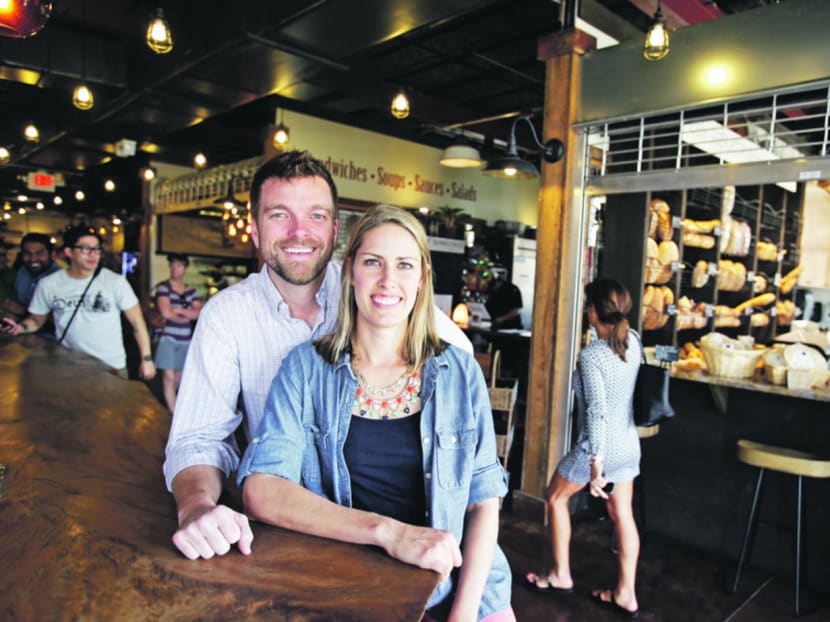There’s more to Orlando than just Mickey and gang, you know
If you’re planning your next trip to the United States, you may want to put Orlando, Florida, on your destination list. Long derided as a cultural wasteland, Orlando’s restaurant and performing arts scenes have blossomed in recent years and are starting to attract attention. Wine Enthusiast magazine recently named Orlando as one of the top wine travel destinations in the US and The New York Times singled out the food scene when it placed the city at No 13 on its list of 52 Places To Go this year. Wise Bread, a website dedicated to penny-pinchers, called it America’s top city for frugal foodies, while real-estate blog Movoto ranked it the No 2 American city for creative people. And no, the rankings barely mentioned what the city is best known for: Theme parks.

Owners John Rife (left) and his wife Kamrin pose for a photo in the East End Market, a neighborhood market and cultural food hub inspired by local farmers and food artisans in Orlando. Photo: AP
If you’re planning your next trip to the United States, you may want to put Orlando, Florida, on your destination list. Long derided as a cultural wasteland, Orlando’s restaurant and performing arts scenes have blossomed in recent years and are starting to attract attention. Wine Enthusiast magazine recently named Orlando as one of the top wine travel destinations in the US and The New York Times singled out the food scene when it placed the city at No 13 on its list of 52 Places To Go this year. Wise Bread, a website dedicated to penny-pinchers, called it America’s top city for frugal foodies, while real-estate blog Movoto ranked it the No 2 American city for creative people. And no, the rankings barely mentioned what the city is best known for: Theme parks.
“Orlando was very synonymous, and still is, with Mickey Mouse and Disney — and people didn’t really look outside Disney,” said James Petrakis, owner of The Ravenous Pig in the city’s suburb of Winter Park. “Now, with some of these newer restaurants, people are looking at some of the smaller suburbs outside Disney for a true local culture.”
Adding to the buzz about the cultural scene is a new US$500 million (S$695 million) performing arts centre and an international hunt for a new symphony conductor that has attracted some well-known names. “We’ve received some national validation for things that we already thought were cool, but we thought they were cool just because it was something different for us. But now, we know it’s cool here and it would be cool if it were in New York or San Francisco,” said Kamrin Rife, who opened the East End Market with husband John and a few other stakeholders. The market houses a collection of artisanal bakers, coffee brewers, sushi chefs and a Basque restaurant.
Orlando always has had a strong theatre scene — thanks to the many actors who work at theme parks — and also several acclaimed annual festivals, such as the Bach Festival of Winter Park and Orlando International Fringe Theatre Festival. But the construction of Dr Phillips Center, financed partially with taxes on tourists, gives the city a world-class venue for local performing arts groups and national touring acts. There’s a pent-up demand for more dynamic cultural events, said Glen Gentele, director of the Orlando Museum of Art, which is exhibiting the work of sculpture and landscape artist Maya Lin, and Orlando’s arts patrons “are open and receptive to change”.
The city also used to be known as the chain-restaurant capital, a place where corporate restaurant companies would try new concepts on the regular flow of tourists, and where every chain seemed to have planted a flag along the tourist corridor in the metro area’s south-west region. There always have been top chefs drawn to the kitchens at Walt Disney World, Universal Orlando and nearby resorts, but only in the past decade have food entrepreneurs flourished, thanks to the low cost of setting up in Orlando, a vibrant food-truck scene and the growth of local farms providing a variety of fresh meats and produce. Its food-truck community has become a launching pad for new restaurateurs who want to test new concepts for less than US$15,000 (S$20,853), build a base of supporters and launch their restaurants.
The economies of scale leveraged by Disney World and its dozens of restaurants and sommeliers have opened up the Orlando market to wine distributors who usually wouldn’t bother with a market of the size of metro Orlando, which stands at 2.2 million residents. The food scene has Southern roots as well as multicultural influences, thanks to a large Hispanic and Vietnamese population. Last year, more than 100 restaurant owners, local farmers, food writers and suppliers signed a Sunshine Plate manifesto, pledging to support farm-to-table efforts.
A decade ago, “the perception of Orlando was that there were a lot of chains and there weren’t a lot of people taking risks, and there weren’t a lot of restaurants trying to push the envelope or be different”, Petrakis said. “Now, there is competition. There are a lot of young cooks who are getting good training. Now, they’re pushing the envelope.” AP





